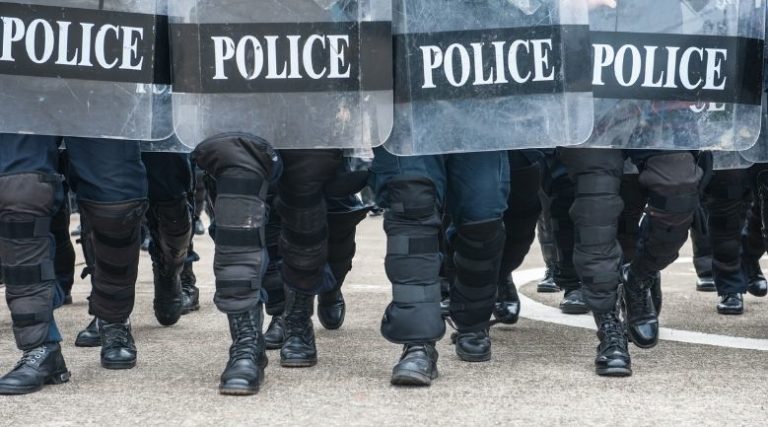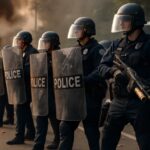It’s no secret that police have weapons comparable to what you might find in some parts of the military. However, police often lack the proper training on when and how to deploy those weapons properly.
Rather than “defunding” the police, the focus for reform in 2021 and beyond should be improving things like professionalism, readiness, attention to detail, and discipline.
Let’s dive into some ways that funding could be re-allocated in a more constructive way to reduce the number of police-involved deaths while still giving police the latitude they need to do their jobs day in and day out.
Police Professionalism
The trend toward a more professionalized police force has been underway for years but really needs to pick up speed in light of everything that’s happened this year.
The report “New Perspectives in Policing” from the Harvard Kennedy School of Government outlines the push for reform while acknowledging how tough it can be to get there.
“We know how difficult it can be to narrow the gap between these ambitions and many deeply ingrained routines and practices,” authors Christopher Stone and Jeremy Travis write. “Much policing in the United States remains, in these terms, unprofessional, but professional ambition is itself a powerful force and it is at work almost everywhere.”
In the article, Stone and Travis go on to call for what they describe as New Professionalism, which includes increased accountability, legitimacy, and cooperation among police departments across the country for national coherence.

The goal, the authors say, is to strike a balance between upholding the rule of law and keeping communities safe while also remaining accountable to those communities and their residents.
“Professional policing enhances democratic progress when it accounts for what it does, achieves public support, learns through innovation and transcends parochialism,” they write. “That is the promise of the New Professionalism.”
On an individual level, Joel Shultis, founder of the National Center for Police Advocacy, said acting professionally means always being a teacher, a leader, and a learner.
“A professional knows that very few others know what it feels like to do the kind of work they do. They know that critics are many,” Shults wrote in PoliceOne. “They know that mistakes can cost in lives and lawsuits. Professionals are typically rewarded well by the satisfaction of their high calling, their respect in the community, and excellent compensation. In the law officer’s case, it may be only one of those and seldom all of them.”
Training and the Use-of-Force Continuum
Rather than taking away crucial funding from law enforcement, a more constructive approach would be to redirect those funds toward training on things like de-escalation techniques, interpersonal communications skills, and working with less-than-lethal equipment like batons and pepper spray.
When confronted with a tense situation, police rely on deadly weapons because those are predominantly the tools they have at their disposal. Many police officers are not properly trained to de-escalate situations verbally before turning to the use of force.
There is an entire Use-of-Force Continuum created by the National Institute of Justice (NIJ), the research, development, and evaluation agency within the U.S. Department of Justice. According to its website, the NIJ “regularly engages with criminal and juvenile justice researchers and professionals to learn from their unique expertise and gather information on what knowledge, tools, and resources are necessary to reduce crime and advance justice.”
The Use-of-Force Continuum was published in 2009 to provide overarching guidance to the standards that local law enforcement agencies have. A typical situation might look something like this:
- A police officer’s presence is enough to resolve a situation
- Use of verbal force in the form of non-threatening commands, such as a request for identification.
- Use of bodily force, such as holds and joint locks, to restrain an individual — also known as empty-hand control
- Use of less-lethal methods like batons, pepper spray, or conducted energy devices (tasers)
- Use of lethal force as a last resort if a suspect poses a serious threat to the officer or another individual
Common-sense solutions like professionalism, training, and the use-of-force continuum can go a long way toward improving relations between police and the public while giving officers a wide range of tools to use in the course of their work.
Across the country, calls to “defund the police” have emerged from protesters following the deaths of George Floyd and others. While these calls are easy to share on social media and yell in the street, actually implementing them is much more difficult — and dangerous — for our communities.








